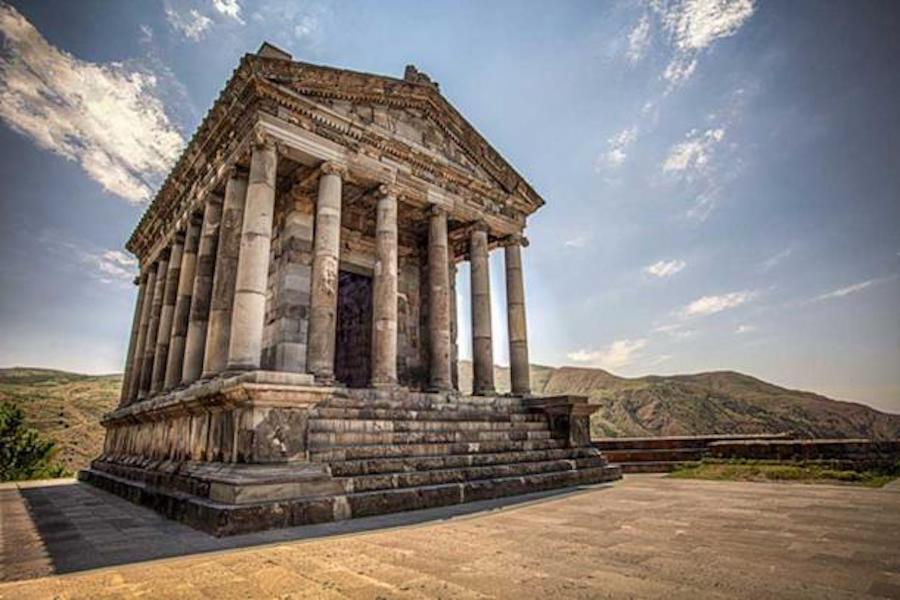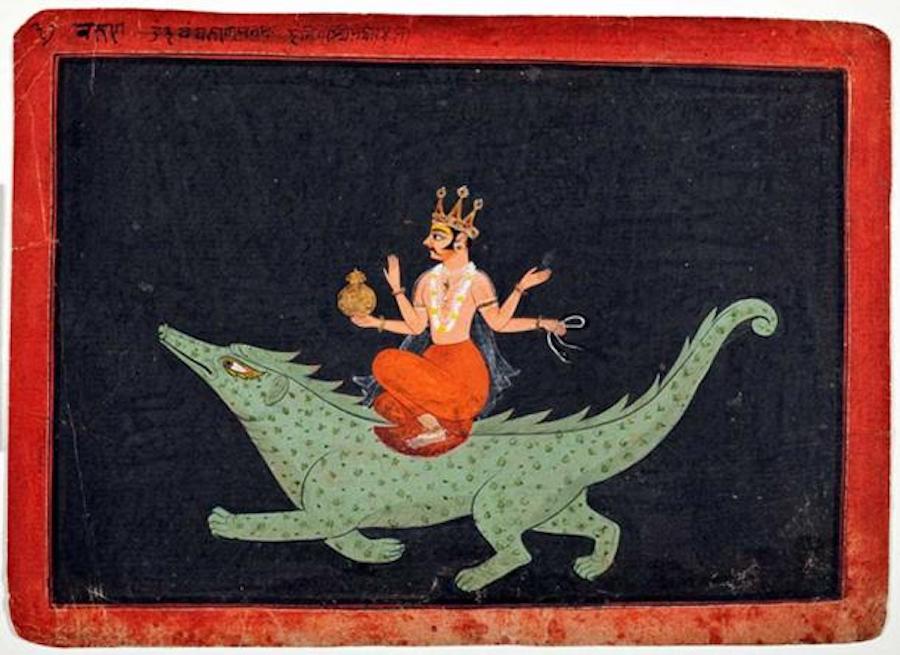The Cult of Mithra: Sacred Temples, Vedic Legends, and Ancient Armenian KnowledgeMar 29, 2018

Mithra was the god of light, purity, goodness, truth and occupied an important place in the faith of the ancient India-European peoples.
There are various opinions on the spread of the Mithra (or Mithras, Mitra) cult, but the most reliable one is the first written protocol about the Mithraic cult from 14th century BC.
In the treaty text signed between the powerful kingdom of Mitanni (Mitanni was situated in the North of Armenian Plateau) of king Shativaza (unknown-1350 BC), and the Hittite king of Suppiluliuma (1380-1346 BC) we can see the name of Mithra. So the Mithraic cult was mentioned in Persian cuneiform inscriptions and in the Indian Vedic texts since the fourth century BC.
As a result of the religious revolution of Ardashir II, the Sassanid King of Persia in 395 AD, the cults of Mithra and Anahita, the Iranian goddess, were imported to Persia and combined with Zoroastrianism. In the first century BC the cult of Mithra penetrated into Rome, and in the third century AD this religion had become international and spread from India to the Black Sea, from the Balkans to Britain and Spain. Now there are more than four hundred Mithraic temple ruins throughout the Europe.
So at first, in fourth century BC this cult spread from the Armenian Plateau to South Persia and India and in first century BC to North-West Europe.
Temples of Mithra
In Upper Armenia, the main temple of Mithra (or Mihr) was at built in the village of Bagaritch, Derjan region (eastern Turkish territories). The temple of Garni was also dedicated to the cult of Mithra.

In the city of Artashat, Mithraic temple ruins have been unearthed which were built from black marble and reconstructed in the first century AD by Tiridates I, King of Armenia of the Arsacid Dynasty.
A statue of Mithra sits near the tomb of Antiochus I on Mount Nemrut (southeastern Turkey). He can be seen sitting in the left side of Aramazd, creator god in pre-Christian Armenian myth.
In the ancient Armenian “Daredevils of Sassoun” epic also we can see the character of Mithra.
In ancient sculptures Mithra often was portrayed as a powerful young man with a Phrygian or Armenian cap who kills a sacred bull, called the tauroctony.
In the Armenian pantheon Mithra was the god of the light and purity. It’s believed that a temple dedicated to Mithra also has been found in Armavir, the ancient capital of Armenia.
The cult of Mithra began to disappear in the fourth century BC.
Mithraic Legends
According to Armenian ancient beliefs, 365 saints are living in the heart of the Sun and each of them is the owner of one day of the year, appointed in order to prevent evil.
It is said that within the salty sea (Lake of the Van), there was a rock, and when heaven was darkened the light fell on the rock and shortly after was born Mithra, almost naked but with a Phrygian hat on his head, and torch in his left hand, and it illuminated the world. By killing the bull, Mithra was creating the world from its parts.
Strabo chronicled that during the ruling of Achaemenid Empire the Armenian Satrap donated 20,000 horses to the annual Mithra celebration. The observations dedicated to Mithra were celebrated by Armenians in the Month of Areg, which coincided with Iranian month of Mithra. The Armenian seventh month is named Mehekan and each month’s eighth day was called Mithra.
Born of Rock
Mithra, the god of light, kindness and contracts was indeed born from the very rock—this characteristic is affirmed either by archaeological finds or by the Geghard temple in Armenia, which is carved into the rocky landscape.
In 1953-54 during research in Eskikale (Turkey) a tunnel was unearthed which reached depths of 160 meters (525 feet) consisting of a long mountain slope ending with two circular rooms. It is similar to the tunnel at Bagaritch in Upper Armenia with the temple complex dedicated to Mithra.
From the mythological point of view, tunnels are the place of birth of Mithra as it said “the beam, separated from the star, penetrates into the depths of the tunnel, giving birth to Mithra, from where he ascended to heaven.” The carved temple of Geghard has also been seen as the birthplace of Mithra during the pre-Christian period.
The Cult of Mithra in Vedic Texts
In Vedic texts Mithra is the god who protected the Sun and is always mentioned with Varuna.
In Indian sources Mithra is the god of love, light, tenderness and sun shine. The closeness and affection of Mithra and Varuna is inseparable and stable. Varuna is the god of heaven and night. Mithra is the god of light, sunshine and day. These gods of night and day are fellows in cult rituals. Varuna is also the god of waters and seas , and is the husband of Varun, god of wine.

Vedic texts are notable for the main ritual of the Mithraic cult, such as sacrificing a bull, which penetrated to Europe. One of the noblest gods is Soma (in Avesta, the primary collection of religious texts of Zoroastrianism, he is instead named Haoma). Soma is the god of invincible power, the god who cures all the diseases. It is Soma who gave life, wealth, and wish fulfillment.
In Sanskrit, the name Soma is used for the Moon. They are the same only by name, however, as all the characteristics of the Moon are attributed to a goddess of plants. So, they believed the moon presided over healing plants and thus sacrificed oblations and offerings in worship rituals.
Also Soma is the name of a sacred plant. From the leaf of this plant was made a strong alcoholic beverage loved by the gods, and which was dedicated to the gods. During rituals, priests drank this beverage in order to come close to and join with the gods. Soma was the life deity and life essence, and even though the gods received their eternity from this beverage, mortal men could attain temporary ‘eternity’ by drinking the beverage too, allegorically meaning the joining with the God and Essence.
According to legend a riot arose between the gods. The god Shiva got involved in the formidable fighting and in one stoke divided god Soma in two, which demonstrates the tradition of sacred bull killing.
In other versions the gods decided to kill Soma. The god Wayuu ordered the execution and asked help from Mithra-Varuna. Mithra refused to help and said, “I wish love, boon and affection to everybody.” At the end Mithra agreed to participate in ritual killing in order to benefit from the sacrifice. After the killing they crushed Soma between two stones. It was Mithra’s responsibility to spill on the ground the part of his Soma juice from which would germinate the plants and the animals.
In pictures and sculptures of the bull sacrifice ritual, Mithra is often seen turning his face and eyes away, indicating the rejection or distaste of this action. But the bull is the source of life, and the ritual is necessary.
via Ancient Origins
Be the first to post a message!